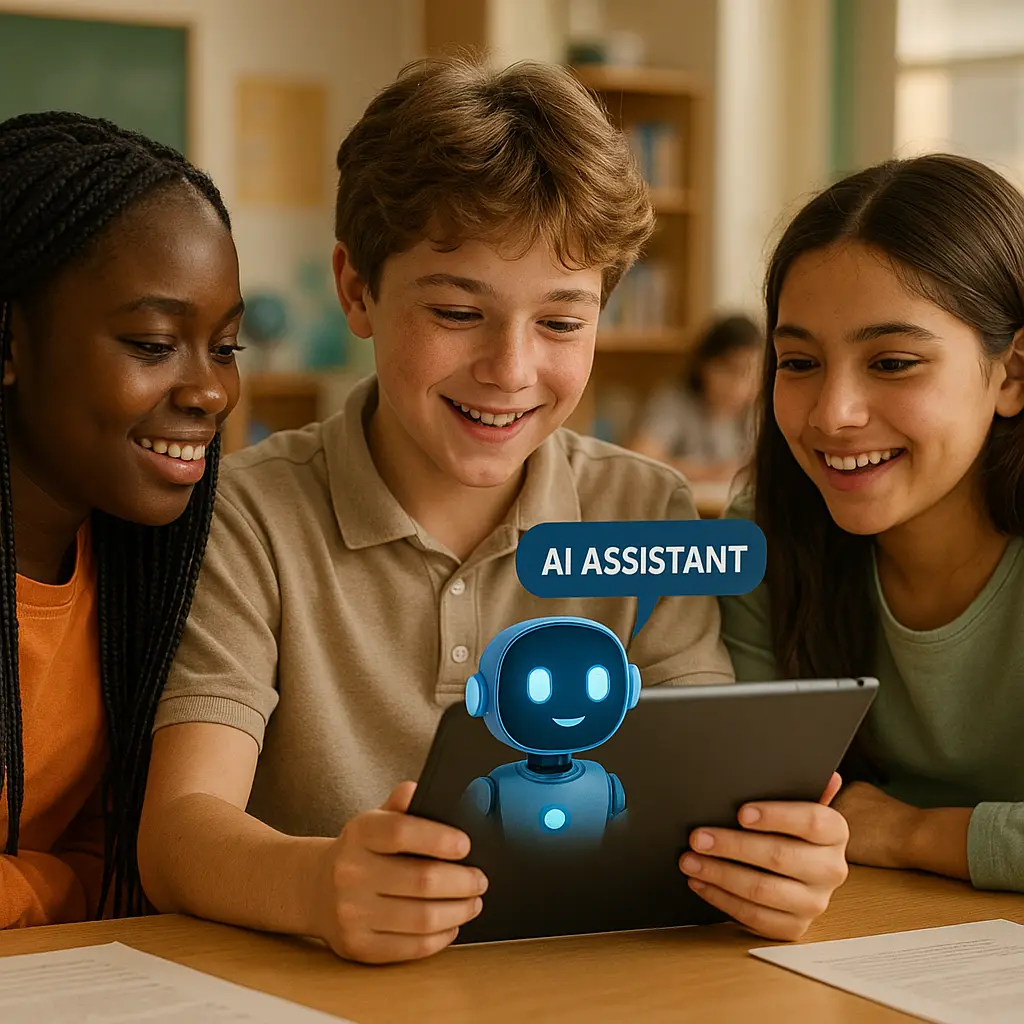Artificial Intelligence (AI) is already changing many areas of our lives, and education is no exception. The future of AI in education: what to expect is a question that concerns many teachers, parents, and students. Will robots replace teachers? Will learning become easier or harder? Let’s talk about this in a clear and friendly way.
Understanding AI Without the Jargon
Before imagining the future, we need to understand what AI means in simple words. Think of AI as a super-smart helper. It’s not a person or a robot with feelings. It’s a system that uses data to “learn” and help with tasks. For example, when you use voice assistants like Siri or Google Assistant, or when Netflix suggests a movie—it’s AI working behind the scenes.
In schools, AI can help teachers and students in different ways. But don’t worry—it’s not here to take your job as a teacher. It’s here to make your job easier and help students learn better.
How AI Is Already Helping in the Classroom
AI is not something of the distant future. It’s already present in many schools around the world. Here are some examples:
- Personalized learning platforms: Tools like Khan Academy and Duolingo use AI to adjust content based on each student’s progress.
- Automatic grading: Some systems can correct multiple-choice questions and even give feedback on writing.
- Tutoring bots: These are like mini digital assistants that help students with homework or answer questions anytime.
These tools don’t replace the teacher—they support the learning process. Teachers are still essential for guiding, motivating, and understanding students on a human level.
What to Expect in the Coming Years
Now let’s look ahead. What can we really expect from AI in education?
Smarter Educational Tools
AI tools will become more advanced. Imagine a system that understands when a student is confused and adjusts the lesson automatically. Or a reading platform that changes difficulty based on the reader’s mood and focus. These tools are being developed right now.
Better Support for Teachers
Teachers spend a lot of time on administrative tasks—planning, grading, organizing. AI can help reduce this burden. Systems that prepare lesson plans, suggest activities, or evaluate student progress can save hours each week.
Inclusion and Accessibility
AI can also help students with learning disabilities. Voice-to-text tools, real-time translation, and personalized content can make education more inclusive. A student who struggles with reading might benefit from an AI that reads the content aloud with the right tone and pace.
Lifelong Learning
Education is no longer just for children or teens. Adults constantly need to learn new skills. AI will power platforms that offer flexible, customized learning for people at any stage in life, especially those with busy schedules.
What Teachers Need to Know
As a teacher, it’s normal to feel unsure about new technologies. You might wonder: Will I be replaced? Do I need to become a tech expert?
The answer is: No, and no.
AI will not replace teachers. Instead, it will be your ally. You don’t need to master programming or robotics. But it’s good to understand the tools available and how they can support your teaching.
Look for platforms that:
- Are easy to use.
- Offer training or tutorials.
- Have good reviews from other educators.
- Protect student data and follow privacy laws like LGPD (Brazil) or GDPR (Europe).
Challenges and Ethical Concerns
Of course, not everything is perfect. AI also brings challenges:
- Data privacy: Students’ information must be protected.
- Bias: If the data used to train AI is unfair, the results can also be unfair.
- Overreliance: Relying too much on AI could reduce human interaction and empathy in learning.
That’s why it’s important to use AI tools wisely and combine them with human touch.
How to Start Using AI in Your Classroom
You don’t need to change everything overnight. Start small:
- Use AI tools for planning or grading.
- Try a learning app that adapts to your students’ level.
- Explore free AI chatbots to answer common questions.
Talk to other teachers, share experiences, and keep learning. There’s no one-size-fits-all. What works in one class may not work in another. But trying something new can open doors.
Benefits for Students
Students can benefit from AI in many ways:
- Get personalized feedback.
- Learn at their own pace.
- Access help anytime, anywhere.
- Feel more engaged through interactive lessons.
This doesn’t mean traditional methods are gone. Books, notebooks, group activities—all still matter. But AI can add more possibilities.

What the Future Holds
In summary, the future of AI in education is full of promise. It’s not about machines taking over classrooms. It’s about giving teachers more tools and giving students better opportunities to learn in a way that suits them.
Technology will continue to evolve. But one thing stays the same: the teacher’s role is irreplaceable. AI can’t give a hug, share a laugh, or inspire a student the way a real person can.
Key Points About The Future of AI in Education: What to Expect
- AI is already in schools, helping with tasks like grading and personalized learning.
- It will become even smarter and more supportive for teachers.
- Teachers don’t need to be tech experts but should understand basic tools.
- AI can help make education more inclusive and accessible.
- Challenges like privacy and fairness need attention.
- AI will not replace teachers—it will empower them.
Conclusion
The future of AI in education brings many changes, but most of them are positive. By understanding how to use these tools wisely, teachers can improve their work, and students can benefit from more personalized and engaging learning experiences.
The best part? You don’t need to be afraid of the future. You just need to stay curious and open to learning. After all, that’s what education is all about.
How do you see AI helping in your classroom? Share your thoughts in the comments below!

